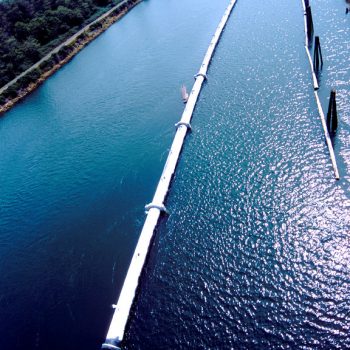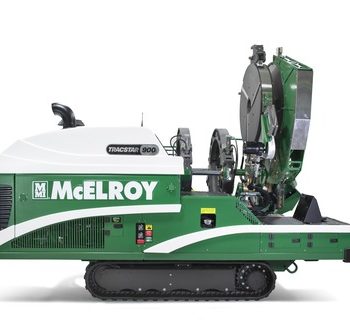The process of butt-fusion is fairly simple and a fusion operator can be trained in a relatively short period of time. For any construction job, safety is always a top priority and the process of pipe fusion is no different. Operator safety and the safety of others depend upon care and judgment during the entire fusion process. No fusion machine should be used until the operator has carefully read and understands the “Safety” sections of the operator’s manual.
Given this, here are a few more safety tips to keep in mind:
- Pick a safe staging area to perform pipe fusion. Vehicle or pedestrian traffic should be held to a minimum in the area in which the fusion operation is being performed. Also choose a location that has no overhead hazards.
- Use personal safety equipment. Always wear a hardhat and protective boots. Gloves can be helpful for protecting hands from the heater and sharp blades on the facer. Protective eyewear is always a good idea especially when cutting bands from pipe bundles or coils. Remove jewelry and rings, and do not wear loose-fitting clothing or long hair that could catch on controls or moving machinery.
- Make sure all equipment is in good working order. All power cords should be in good condition and make sure the grounding blade is not broken on the plug.
- Heaters are not explosion proof. Do not plug heaters in, in a potentially explosive atmosphere or while standing in water. If operating in a hazardous environment, the heater should be brought up to temperature in a safe environment, then unplugged before entering the hazardous atmosphere for fusion.
- When removing pipe from the fusion unit and pulling into place, use proper lifting slings and pulling heads, chains or ropes can slip and cause injury to yourself and/or bystanders, not to mention damage to the pipe.
Once the operator has a strong understanding of the “Safety” aspects of the fusion process, there are several consistent procedures that should be utilized for each fusion operation.
A few procedures to keep in mind are:
- Make sure the fusion unit is well maintained and working properly.
- Pipe should be entering the machine straight and level. This will help reduce drag (the effort it takes to move the pipe ends together).
- When facing the pipe ends, always face to the machined stops. This assures the pipe ends will be square to each other, with no gaps or voids.
- Align the OD of the pipe ends. There should be no more than 10% of the wall thickness in misalignment, to maintain full joint strength.
- Check heaters to make sure they are operating properly and the faces are clean. Wipe the heaters with a clean non-synthetic cloth before making each joint. Other materials may melt and stick to the surface of the heater.
- Use the pipe and fitting manufacturers recommended heater temperatures and heat times.
- Keep in mind that gauge pressure and fusion pressure are two different things. Use the pipe and fitting manufacturers recommended fusion pressures (normally 75psi of surface area to be fused). Gauge pressure should be calculated using a fusion pressure calculator specific to the machine being used.
- Cool the newly made fusion joint, in the machine, under fusion pressure until the joint is cool to the touch (approx 1 minute per inch OD minimum).
- After removing the pipe from the machine, wait at least 20-30 minutes before rough handling the joint or pressurizing the system.

